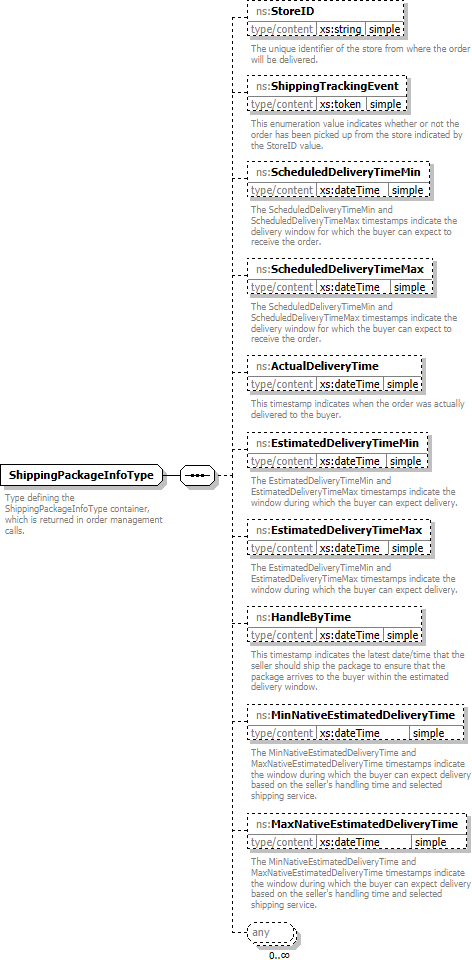Type: |
xs:dateTime, predefined, simple content
|
The ScheduledDeliveryTimeMin and ScheduledDeliveryTimeMax timestamps indicate the delivery window for which the buyer can expect to receive the order. The ScheduledDeliveryTimeMin value indicates the earliest time that the buyer can expect to receive the order.
The ScheduledDeliveryTimeMin and ScheduledDeliveryTimeMax fields will start being returned once the seller marks the order as shipped/provides tracking information. Until then, the EstimatedDeliveryTimeMin and EstimatedDeliveryTimeMax dates are returned instead.
Note:
This field does not appear in Merchant Data API's OrderReport responses, because once shipment tracking information is provided to the buyer, the order/order line item is considered acknowledged, and acknowledged orders do not show up in OrderReport responses.
XML Representation Summary
<ns:ScheduledDeliveryTimeMin> |
|
|
</ns:ScheduledDeliveryTimeMin> |
|
XML Source (w/o annotations (1); see within schema source)

